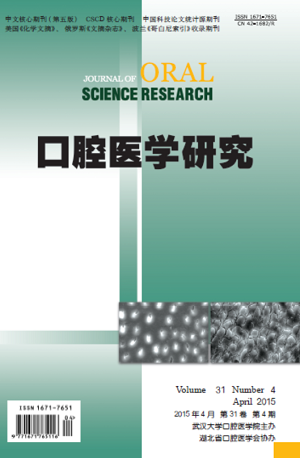|
|
Duraphat in Vitro Study on Prevention of Carbonated Beverages Demineralization of Enamel.
SHENG Ting, YANG Qing-ling, SUN Yu, et al
2015, 31(4):
408-409.
Objective: To confirm the Duraphat can prevent carbonated drinks caused deciduous enamel demineralization. Methods: 72 tooth enamel blocks were randomly divided into four groups, each group of 18 block. Artificial saliva as control group (A); Cola carbonated drinks immersion group (B); Duraphat treatment after Cola immersion group (C); fluoride foam treated Cola immersion group (D). A, enamel blocks were not treated, B, group of enamel blocks were soaked in carbonated drinks in 30min, after removing the deionized water rinse after placing about 4 min, once again immersed in carbonated drinks in 30, so the cycle until 12 h. In experiment C, D, group of enamel blocks were respectively diped smear 4min dollar fluoride, fluoride foam, subsequent treatment with B group. The treated enamel specimens were determined by scanning electron microscopy, energy spectrum analyzer to detect the enamel surface morphology and Ga, P content (weight percentage). Results: Compared to control group, carbonated beverage soaking can cause the enamel surface demineralization, Ca, P content decreased significantly, and microhardness decreased; Fluoride varnish treatment can reduce the degree of ore removal after the enamel surface, and the crystal particle volume increase, reduce the degree of the surface of the Ca, P content is lower than the A group, the difference has statistical significance(P<0.05). Conclusion: Duraphat can be inhibited to some extent in enamel of deciduous teeth in carbonated beverage, and can promote the remineralization.
References |
Related Articles |
Metrics
|

